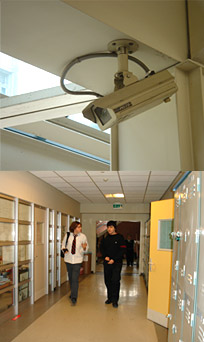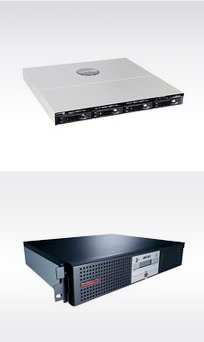
 DETEXI® Network Video Management System DETEXI® Network Video Management SystemEXPAND YOUR CONCEPTS OF SECURITY |
 |
 |
| Javascript Tree Menu | ||||||||||||||||||||||||||||||||||||||||||||||||||||||||||||||||||||||||||||||||||||||||||||||||||||||||||||||||||||||||||||||||||||||||||||||||||||||||||||||||||
|
|
||||||||||||||||||||||||||||||||||||||||||||||||||||||||||||||||||||||||||||||||||||||||||||||||||||||||||||||||||||||||||||||||||||||||||||||||||||||||||||||||||
|
|
— Component Considerations – Hardware (PC Server and Storage) — Overview —
Hardware (PC Server and Storage)
 Similar to the way a PC can save documents and other files, video can be stored on a server or PC hard disk. Specialized equipment is not needed because a storage solution does not differentiate video data — it is viewed as any other large group of files that is stored, accessed and eventually deleted. Similar to the way a PC can save documents and other files, video can be stored on a server or PC hard disk. Specialized equipment is not needed because a storage solution does not differentiate video data — it is viewed as any other large group of files that is stored, accessed and eventually deleted.
Calculating the storage needs
In order to appropriately calculate the storage requirements of a network surveillance system, there are a number of elements to factor in, such as:
Additional parameters should also be considered:
The type of video compression employed also effects storage calculations. Systems employing Motion JPEG compression vary storage requirements by changing the frame rate, resolution and compression. If MPEG compression is used, then bit rate is the key factor determining the corresponding storage requirements.
— Component Considerations – Hardware (PC Server and Storage) — Type of Video Compression —
Hardware (PC Server and Storage) — Type of Video Compression
Calculating the storage needs
The type of video compression employed also effects storage calculations. Systems employing Motion JPEG compression vary storage requirements by changing the frame rate, resolution and compression. If MPEG compression is used, then bit rate is the key factor determining the corresponding storage requirements.There are formulas for calculating the amount of storage to buy. These formulas are different for Motion JPEG and MPEG-4 compressions because Motion JPEG consists of one individual file for each image, while MPEG-4 is a stream of data, measured in bits per second. Motion JPEG calculation
MPEG-4 calculation
— Component Considerations — Hardware (PC Server and Storage) — Storage Options —
Hardware (PC Server and Storage) — Storage Options
 Storage solutions depend on a PC’s or server’s ability to store data. As larger hard drives are produced at lower costs, it is becoming less expensive to store video.
Storage solutions depend on a PC’s or server’s ability to store data. As larger hard drives are produced at lower costs, it is becoming less expensive to store video.There are two ways to approach hard disk storage. One is to have the storage attached to the actual server running the application, called a direct attached storage. The other is a storage solution where the storage is separate from the server running the application, called a network-attached storage (NAS). Server Considerations
If you are adding more cameras, you should monitor the server’s CPU usage so that it doesn’t exceed limitations.
Storage Considerations
When the amount of stored data and management requirements exceed the limitations of a direct attached storage, a network-attached storage (NAS) allows for increased storage space, flexibility and recoverability.
NAS provides a single storage device that is directly attached to a LAN and offers shared storage to all clients on the network. A NAS device is simple to install and easy to administer, providing a low-cost storage solution.
— Component Considerations – Hardware (PC Server and Storage) — PC Server Selectionn —
Hardware (PC Server and Storage) — PC Server Selection
General Server Recommendations for Video Management Sofware
The following table outlines the recommendations for server requirements in implementing an IP-Surveillance system using a video management software. The calculations are based on viewing and recording video with a 640x480 resolution and a 25 percent compression rate using Motion JPEG. Using multiple cameras and higher frame rates will raise the requirements for the server. The recommendations are not minimum requirements.
Hard Disks
When selecting hard disks for your surveillance solution, keep in mind that the recording of a continuous stream of video from multiple cameras will add more load on the hard drive than a standard office PC or mail server.There are three main hard drive solutions on the market:
Serial ATA and IDE are made for office desktops and not for 24-hour server operation as a surveillance solution demands.
|
|||||||||||||||||||||||||||||||||||||||||||||||||||||||||||||||||||||||||||||||||||||||||||||||||||||||||||||||||||||||||||||||||||||||||||||||||||||||||||||||||